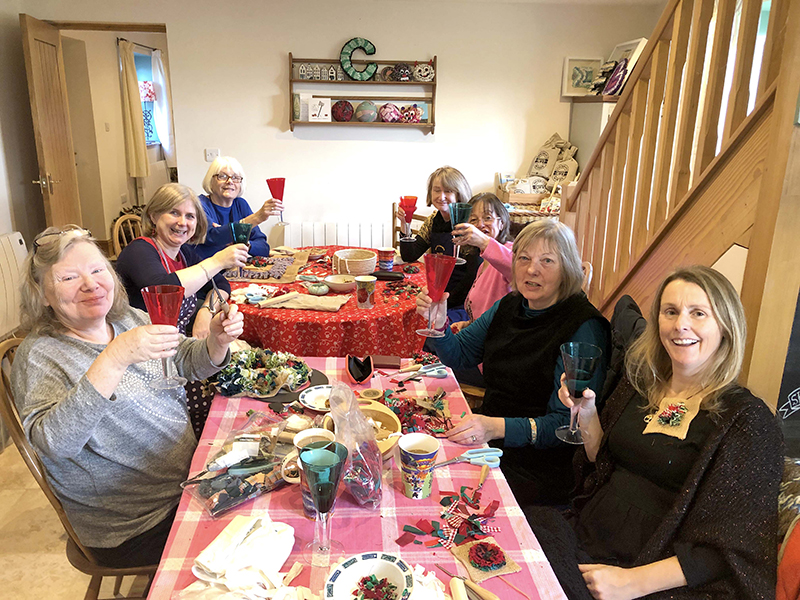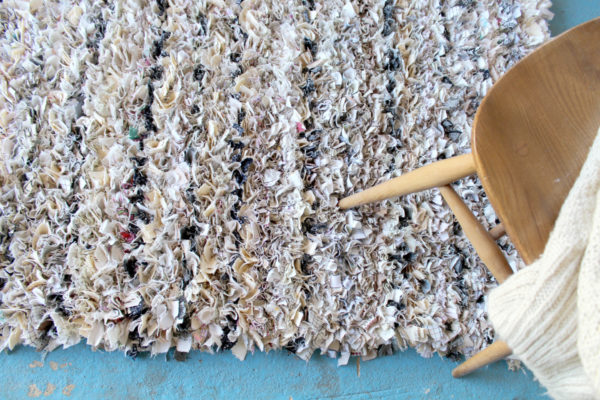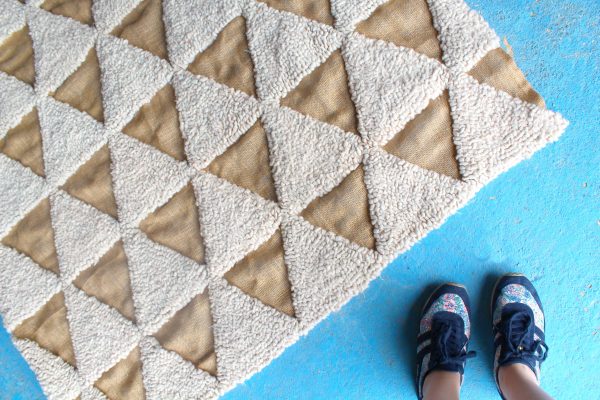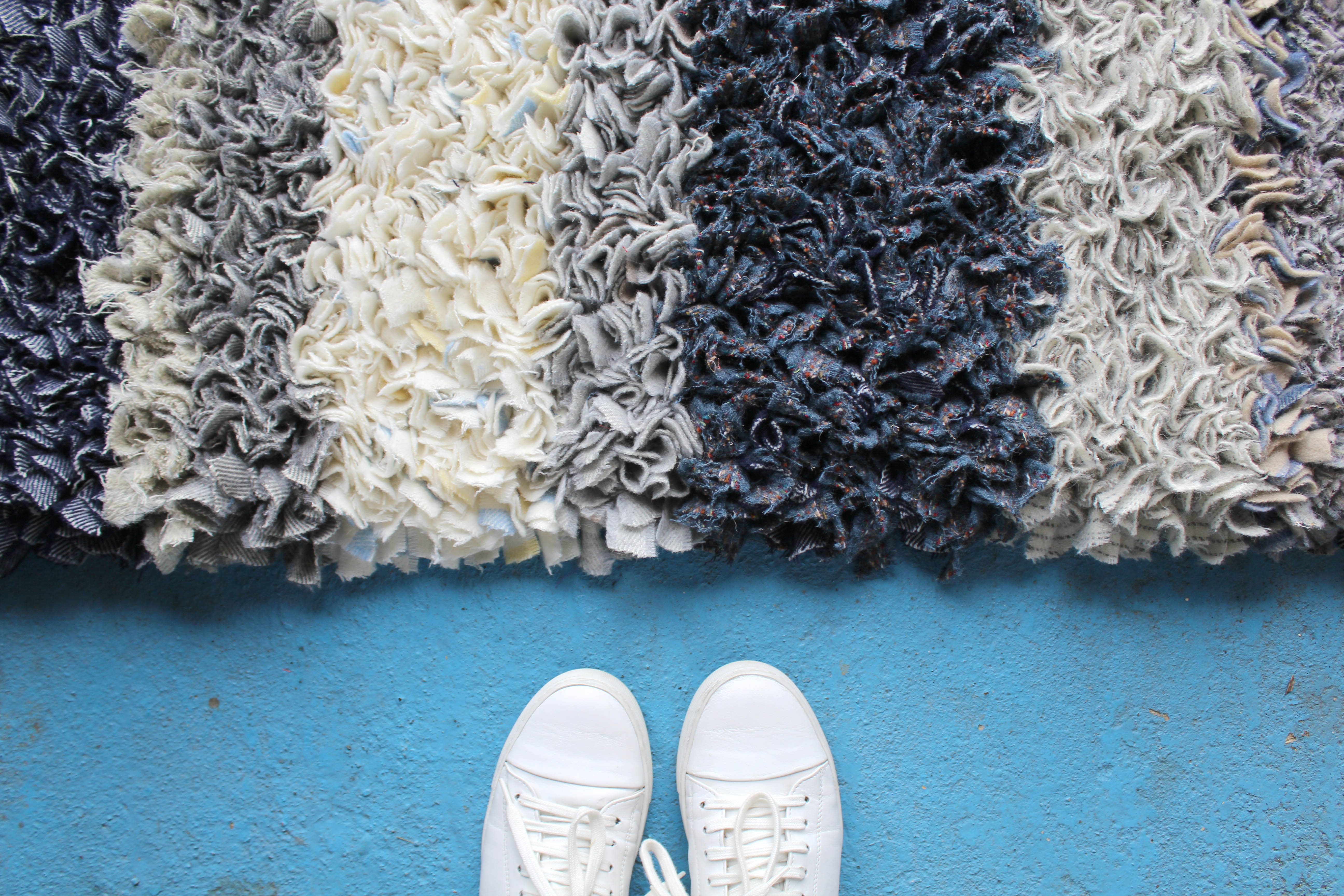Our beloved craft of rag rugging is fairly well known nowadays in the crafting world, and seems to be, slowly but surely, making a comeback. I’d even hope to make the bold claim that here at Ragged Life we’ve had a hand in making more of the public aware of, and even take up the craft. So, we thought it was about time we shared a bit on the background, heritage and history of rag rugs, as this is where much of the beauty lies. Here goes!
If you’ve ever tried rag rugging before, you’ll know that there are two traditional methods- hooky and proddy, or as we call it loopy and shaggy. There’s actually a few different names for these methods, but the outcomes are the same. For loopy, the result is a neater, smoother finish. Any patterns on the fabric are shown better and pictoral designs can be made. Shaggy, as the name would suggest, creates a fluffy finish. This was most commonly used for historic rag rugs as the thickness of the pile made for a very warm and cosy rug.
- Shaggy rag rugging
- Loopy rag rugging
Whilst we adapt to modern day and the trend for recycling, up-cycling and all the -yclings, rag rug making in the past was a thrifty way to re-purpose old cloth from mostly woollen clothes.
Although the methods are well preserved, the actual history of rag rugs is a little vague in places. This is partly due to the fact that, in Britain, the craft was a sign of poverty. The materials used were things that would otherwise be thrown out and the rugs were necessary to keep cold flagstone floors and floorboards warm before today’s luxury of fitted carpets. Therefore, the rugs were not treated as artwork, as they may be today. This meant that, commonly, a new rug would be made every year, and the old one moved to the kitchen, the kitchen rug moved perhaps outside, and the last thrown out! Unfortunately, because of this, it’s difficult to find old rag rug relics.
Rag rugging: a regional craft
Although rag rugging existed all across the country, it was concentrated around mining areas. To make things even more confusing, the history of rag rugs is a very localised history. Different designs, terminology and tools were used depending on where you were in the country. In the North-West of England, for example, rag rugs were put on beds to ward off the cold and in the North-East, old wooden clothes pegs were filed down to rag rug with – hence the name “peggy mats”.
The history of rag rugs: Design
Traditionally, rag rugs were made using old clothing that had reached the end of its life… old woollen coats, trousers and thick fabrics. The original rag rugs were made entirely using natural fibres as that’s all that existed at the time. That’s why many traditional rag ruggers only use woollen materials like our 100% Wool Blanket Yarn to this day.
Cottons were saved for patchworking and finer crafts, but nothing went to waste. Because of the materials that went into them, rag rugs tended to be made using dark colours – it’s what they had after all!
Historic rag rugs often feature a dark border, which was a practical way not to show the dust, and a diamond design to represent the hearth and home. Some even featured a red circle to ward off evil spirits. I like that tradition – we could all do with fewer evil spirits in our lives 🙂
Rag rugging: a social craft
Not only was the practice of rag rugging practical but it was also social. Rag rugging inspired a strong community spirit with family, friends and neighbours meeting to make the rugs together. In this way they could share the candlelight and rush light, again a thrifty saving.

We don’t quite share the candlelight at our rag rug coffee mornings, but it’s still very much a social craft for us.
Women would time things so the rug would usually be finished by Christmas. It would then be laid in front of the fire while the old hearthrug was demoted to the kitchen, that one to the back door and the old doormat thrown on the compost heap or in the dog kennel.
We love the tactile element of the rag rugs and the association with particular clothes that have gone into them – even today any material goes – from swimming costumes to bin bags – whatever takes your fancy.
Cushions are also a modern addition to the rag rug revival and are usually much quicker to complete for a first project.
Hope that was informative and if you’ve got any further details to share we’d love to hear from you! If you’d like to be the first to see future blog posts, why not join our Rag Rug Community on Facebook, follow us on Instagram or join our fortnightly newsletter here.
OR CONNECT WITH US ON SOCIAL MEDIA AT:
Instagram: https://www.instagram.com/raggedlife/
Facebook: https://www.facebook.com/raggedliferagrugs/
Pinterest: https://www.pinterest.co.uk/raggedlife/
Twitter: https://twitter.com/raggedlife
As always, happy rag rugging!
Elspeth x



[…] long time. It was a great way for people to use fabric scraps to create something new, along with rag rugs. You can even see rag projects in heritage museums throughout the United States and […]
[…] long time. It was a great way for people to use fabric scraps to create something new, along with rag rugs. You can even see rag projects in heritage museums throughout the United States and […]
Here in Cumbria I understand that a new rug could start life as bedding before starting it’s journey through the floors of the house.
That’s so interesting Ruth! I’ve heard that one before but wasn’t sure where they did it. I bet the rag rugs kept them nice and warm in bed 🙂
[…] if you’re looking for a more literal history of rag rugging, it can be found here and if you’re looking to take up the craft, do check out our Ragged Life rag rug workshop […]